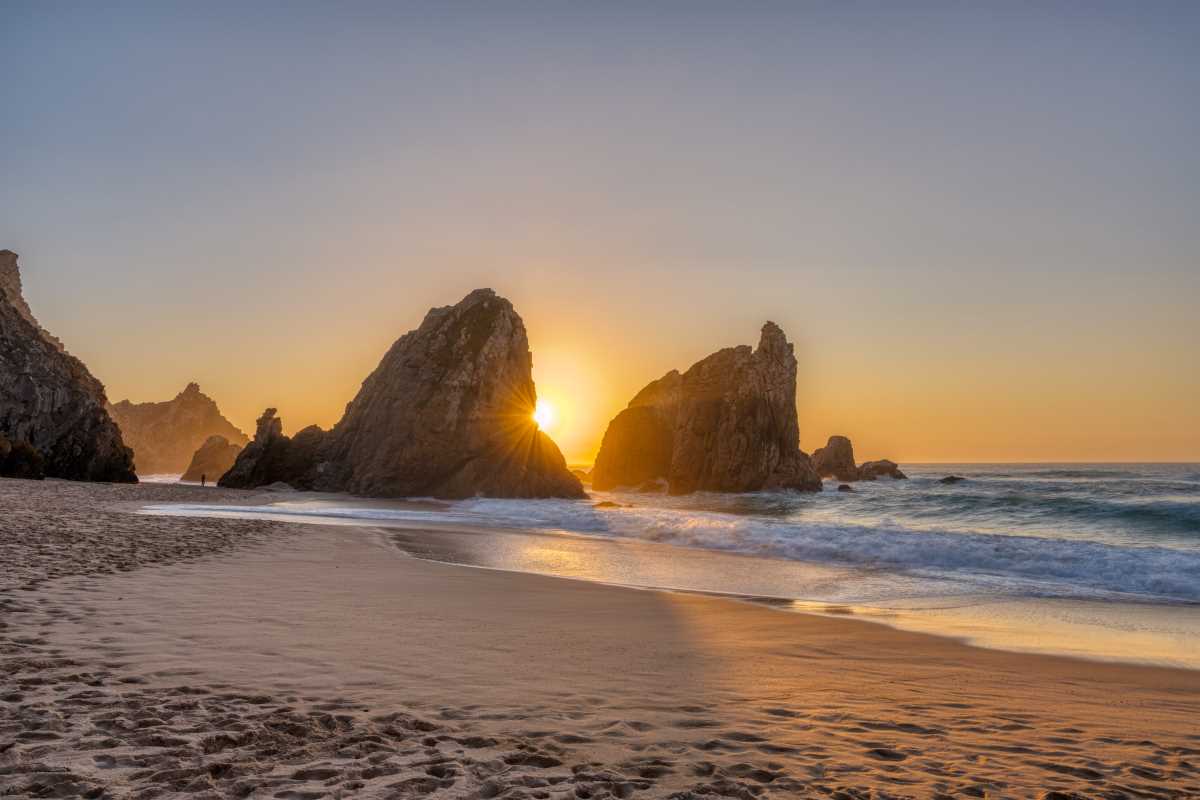There’s a certain magic in discovering a place that feels like it’s yours alone. In a world where popular destinations are often overrun with crowds and selfie sticks, the idea of a secret beach—a pristine stretch of sand untouched by the masses—feels like the ultimate prize. These are the places whispered about by locals, hidden down unmarked paths, and protected by natural barriers. They aren't found in travel brochures; they’re found through curiosity and a spirit of adventure.
Finding a secret beach is more than just a day trip; it’s a quest. It’s about leaving the beaten path behind and being rewarded with unparalleled tranquility, natural beauty, and a sense of true discovery. These hidden gems offer a chance to connect with nature without the noise and distractions of a typical tourist spot. For those willing to put in a little extra effort, here are some of the world's most breathtaking secret beaches that are well worth the search.
Praia da Ursa – Sintra, Portugal
Just a short drive from Lisbon, the coastline around Sintra is famous for its dramatic cliffs and powerful waves. While most tourists flock to the well-known beaches, Praia da Ursa (Bear Beach) remains a secluded paradise for those in the know. Named for the two massive sea stacks that resemble a bear and its cub, this beach is a wild, untamed beauty.
Getting there is part of the adventure. The journey involves a hike down a steep, rugged, and unmarked dirt path that winds along the cliffside. The trek can be challenging, but the reward is immense. As you descend, the view opens up to reveal a stunning golden cove, flanked by towering cliffs and pounded by the turquoise waters of the Atlantic. The beach is often empty, save for a few local surfers or adventurous hikers. The sense of isolation is profound, with only the sound of crashing waves and the cry of seagulls to break the silence.
How to Find It:
- Drive towards Cabo da Roca, the westernmost point of mainland Europe.
- Look for a dirt parking area just before you reach the main lighthouse.
- Find the trailhead and be prepared for a steep 20-30 minute hike down. Wear sturdy shoes, not flip-flops.
Lord Howe Island, Australia
While not a single beach, Lord Howe Island is a UNESCO World Heritage-listed paradise that feels like one big secret. Located in the Tasman Sea between Australia and New Zealand, the island only allows 400 visitors at any one time, ensuring its pristine environment remains protected and its beaches are never crowded. The entire island has a tranquil, old-school vibe, with bicycles being the primary mode of transportation.
The island is home to numerous secluded beaches, each with its own unique charm. Ned's Beach is famous for its friendly kingfish that swim right up to the shore for hand-feeding. Blinky Beach is a surfer’s dream with consistent waves and soft white sand. For true seclusion, make your way to the remote beaches on the island's north end, like Old Settlement Beach, where you can snorkel with sea turtles in calm, crystal-clear water, often without another soul in sight. Lord Howe Island is the definition of an unspoiled sanctuary.
How to Find It:
- Flights to Lord Howe Island depart from Sydney and Brisbane, Australia.
- Book your accommodation and flights well in advance, as visitor numbers are strictly limited.
- Once on the island, rent a bike and explore the various beaches at your own pace.
Holbox Island, Mexico
Far from the mega-resorts of Cancun and Tulum, Holbox Island (pronounced "hol-bosh") is a laid-back, car-free island on the northern coast of the Yucatán Peninsula. The island is part of the Yum Balam Nature Reserve, which has helped protect it from overdevelopment. The vibe is rustic-chic, with sandy streets, colorful murals, and a slow-paced way of life.
The main beach in town is beautiful, but the real secrets are found by walking or biking away from the center. Head west towards Punta Cocos, and you'll find long stretches of empty white sand and shallow, calm water. At night, this area is known for its incredible bioluminescence, where the water glows with every movement. To the east is Punta Mosquito, a massive sandbar that appears during low tide. You can walk for miles out into the turquoise sea on a sliver of pure white sand, surrounded by flamingos and other seabirds. It feels like you’re walking on water at the edge of the world.
How to Find It:
- Take a two-hour drive or bus from Cancun to the port town of Chiquilá.
- From Chiquilá, it’s a 20-minute ferry ride to Holbox Island.
- Rent a bike or a golf cart (the island’s "taxis") to explore the more remote points.
Fakistra Beach – Pelion, Greece
The Greek islands get most of the attention, but the mainland holds some of its own stunning secrets. The Pelion Peninsula is a lush, mountainous region that juts out into the Aegean Sea, and its eastern coast is dotted with hidden coves. Fakistra Beach is one of its most magical spots, a tiny, secluded beach nestled at the base of a verdant cliff.
Reaching Fakistra requires a short but steep hike through a dense forest of plane and chestnut trees. The path opens up to a small, pebbly cove with some of the clearest, most intensely turquoise water you’ll ever see. A waterfall cascades down the cliffs at one end of the beach, and a hidden cave, which is said to have housed a secret school during the Ottoman occupation, sits at the other. The beach is completely wild, with no sunbeds, cafes, or amenities of any kind. It’s a place for pure, uninterrupted connection with nature.
How to Find It:
- Fakistra is located on the eastern side of the Pelion Peninsula, near the village of Tsagarada.
- Follow the signs and park at the designated spot.
- Hike down the well-marked but steep trail for about 10-15 minutes.
The Journey is the Destination
Secret beaches remind us that there are still quiet corners of the world left to discover. The effort it takes to find them—the hike, the long drive, the boat ride—is part of what makes the experience so special.
 (Image via
(Image via


.jpg)


